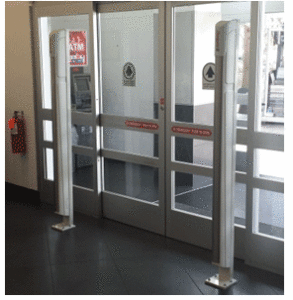
Out of control spending may be okay for the federal government (Let’s be frank 20+ trillion of debt seems pretty out of control to most of us) but as a store owner or manager out of control expenses will bury your company. I am sure that you are looking carefully at where you spend your cash, reviewing controllable reports and monthly expenses. What you may not be considering is how operating a store without inventory controls in place can be negatively impacting the profits of your store.
When I talk about inventory controls I am not simply referring to activities on inventory night, I am talking about everything the store does all year to control merchandise. For example, the store I work for receives their pallets of freight several times a week. Included in these pallets are sealed plastic shipping boxes that hold individual pieces of merchandise. Some of these boxes have different colored seals and colored seals are indicators that the merchandise inside is high value/high theft goods requiring strict controls. The merchandise in these boxes requires security devices or immediate lock-up. When I was a Loss Prevention Manager for another company we had a lock-up cage we staged at the trailer receiving door. As specific high-risk merchandise came off of the trailer that product immediately went into the cage. That merchandise had to get to its department following a very specific path and if I observed any deviation from that path I was investigating the issue. The store where my daughter works requires all jewelry shipments be taken immediately to the jewelry counter, counted against the invoice and stocked. Jewelry is not allowed to sit out until it is convenient to secure it. Having a detailed plan for identifying high-risk products, verifying counts against invoices right away and immediately securing it are smart steps in preventing inventory shortage from getting out of control.
Electronic article surveillance (EAS) systems are another key piece of a sound inventory control strategy. When I mentioned securing products above it does not necessarily mean that merchandise has to go into a lock-up case. Most merchandise can be protected against theft with EAS labels, hard tags, wraps and other protective devices (for example Sensormatic has a product called Flexible Safers that can hold items and still give EAS protection). There are some things that a display case is appropriate to display merchandise in such as high-end jewelry. By the same token, there are EAS products suitable for costume and less valuable jewelry. Inventory control of such pieces of merchandise means tagging these items by a team of trusted employees before they are on the sales floor and accessible by other employees or shoppers. An EAS system also includes the installation of towers at all points of entrance and exit. A common error on the part of many retailers is the failure to place towers near vendor doors and employee-only entry doors. Failing to protect these doorways is a misstep in recognizing the reality of employee theft and the impact it has on store profitability.
Inventory control also takes place in in-store training programs. Teaching employees how the customer service they provide helps prevent shoplifting plays a part in inventory control. Training front end supervisors and cashiers how to properly handle EAS alarm activations determines how much merchandise you may or may not recover from potential thieves. Even the proper training of specialists who show merchandise from lock-up showcases impacts the potential for a crook to steal. How many pieces of jewelry should be out of a case to show a customer at any time? One, two, or three items? You have to teach your team what you expect and how someone may try to trick them while they are showing merchandise.
Inventory control is a year-round effort. It encompasses more than locking up merchandise or preparing for an annual inventory. Inventory control requires an in-depth look at where losses can take place, how they occur and who may be causing the losses. Once you do that you can implement solutions to the problem by creating a comprehensive shortage prevention strategy. Do that and you keep from losing control over your store profit line.
 Loss Prevention is a wonderful career choice that can lead to other positions in retail. There are, however tips I wish I had known before I began the job that would have prepared me for the adventure I was about to embark on. I started out in a Loss Prevention Associate position after spending four years as a U.S. Air Force Law Enforcement Specialist and another 2 ½ years earning a Bachelor’s Degree.
Loss Prevention is a wonderful career choice that can lead to other positions in retail. There are, however tips I wish I had known before I began the job that would have prepared me for the adventure I was about to embark on. I started out in a Loss Prevention Associate position after spending four years as a U.S. Air Force Law Enforcement Specialist and another 2 ½ years earning a Bachelor’s Degree.
 Shoplifting affects everyone. As shoplifting and employee theft seem to be an unstoppable problem for the retail industry, researchers try to find different methods to prevent and combat shoplifting.
Shoplifting affects everyone. As shoplifting and employee theft seem to be an unstoppable problem for the retail industry, researchers try to find different methods to prevent and combat shoplifting.